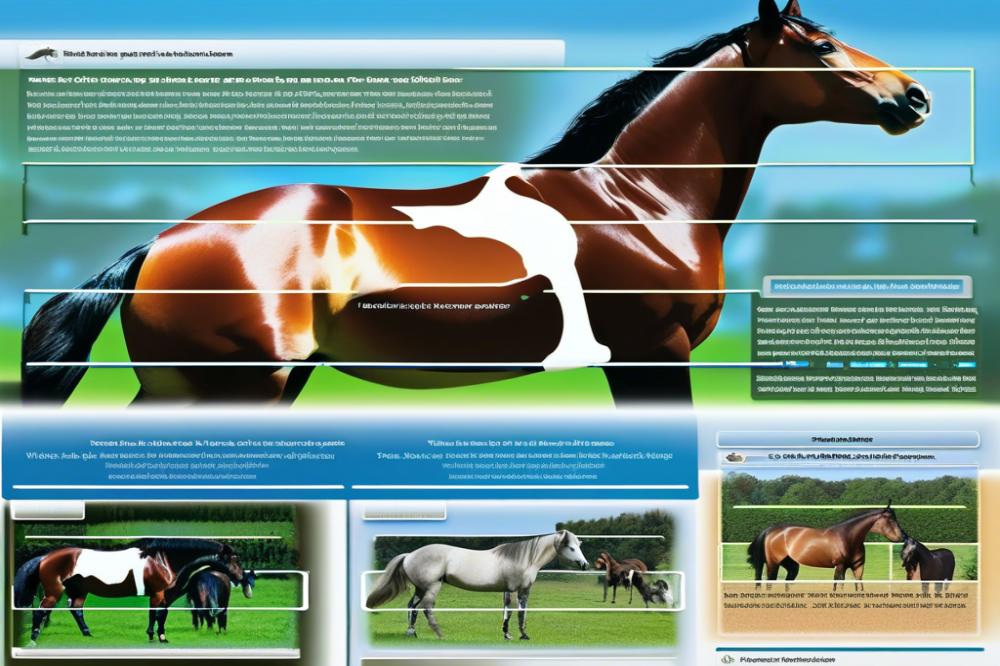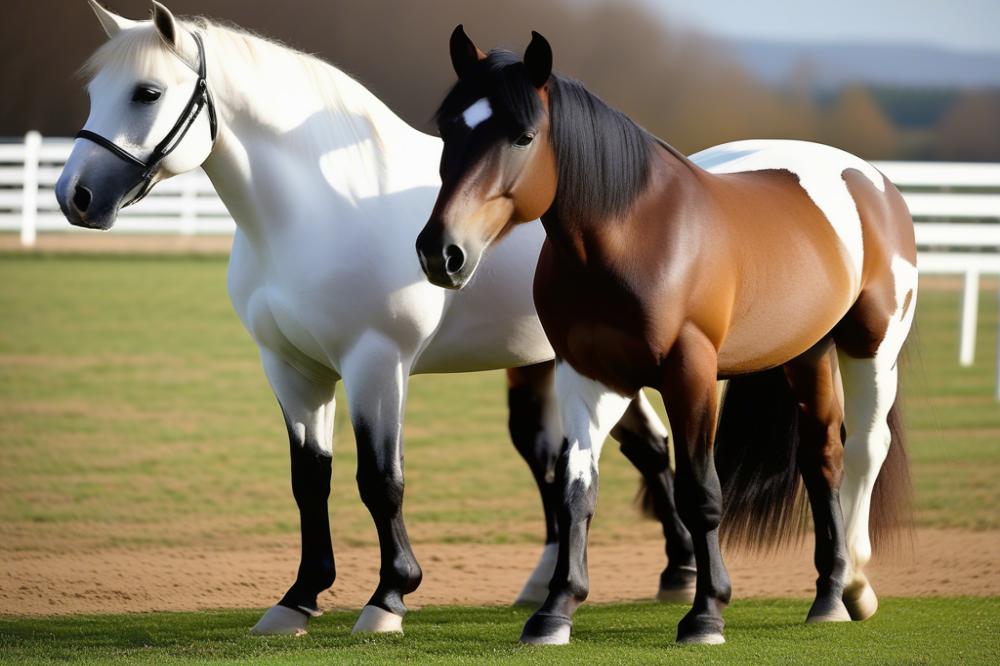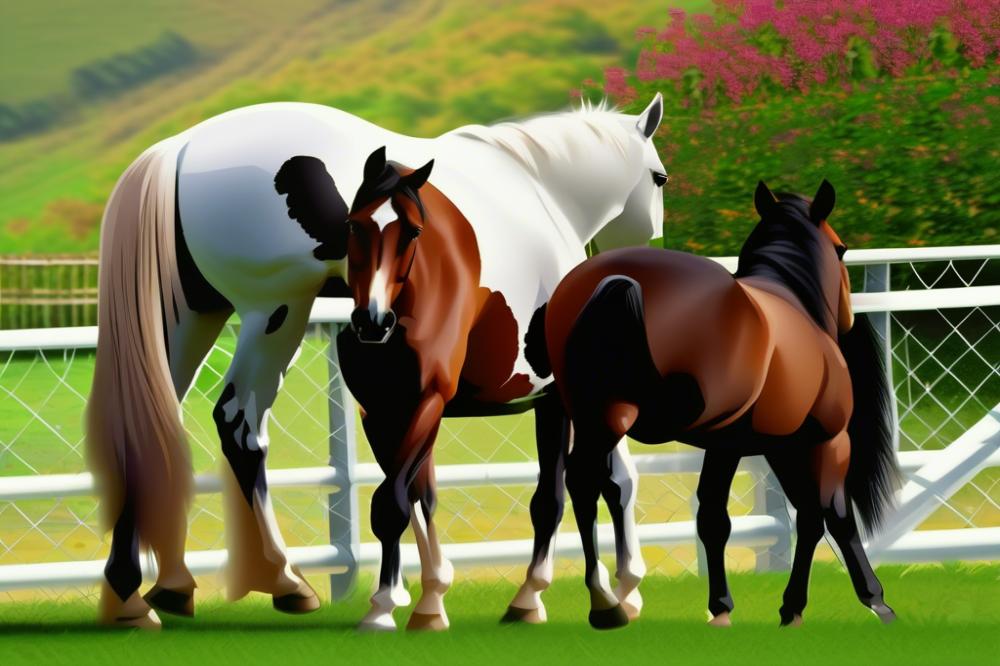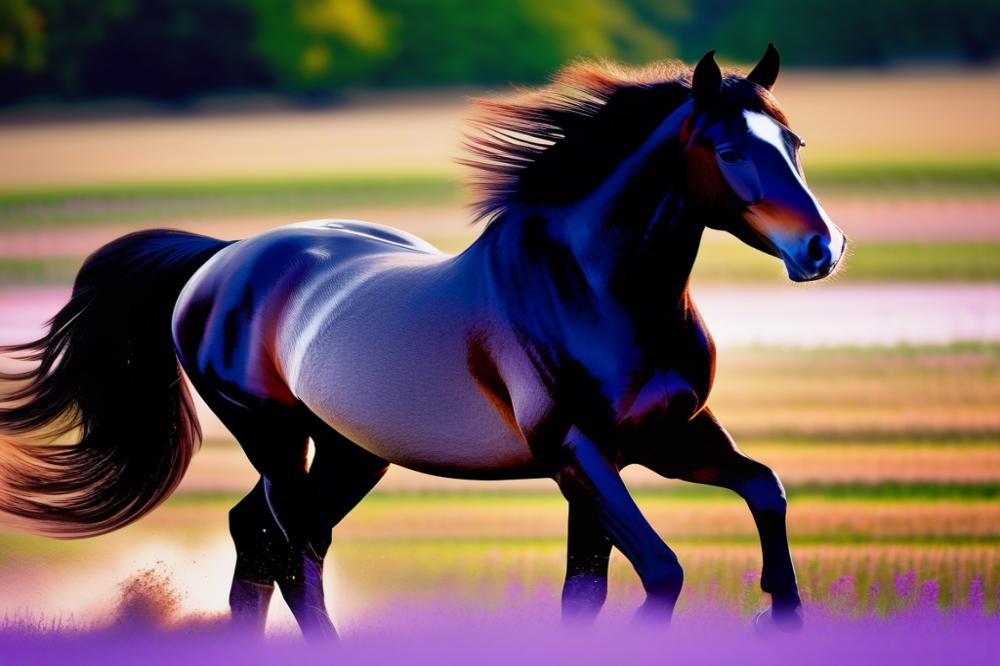Understanding the Basics of Horse Breeding
Horse breeding can seem like a world of its own, but it’s really just about creating healthy and high-performing horses. This process involves selecting the right pairs of horses to produce offspring with desired traits. Think of it as matchmaking, but for horses! It’s important to grasp the basics, especially if you’re hoping to get into equine reproduction.
Equine genetics plays a massive role in breeding. Breeders often look at the bloodlines, which can tell a lot about the future potential of a young horse. Just like family traits, certain qualities like speed, strength, or temperament can show up in the foals. Good bloodlines often mean better prospects for success in equine sports.
Why does breeding horses matter, you ask? Well, think about the fields of competition and agriculture where horses are essential. Many riders rely on well-bred horses to give them an edge in races, shows, or working on farms. Each horse has its own special qualities that can be appreciated in both the saddle and the field. Without proper breeding, we wouldn’t have those hard-working companions or the champions we see in competitions!
The goals of breeding can vary greatly from person to person. Some may aim to create top-tier racing horses that can outrun the wind, while others might focus on building a stocky workhorse that can plow a field all day. Breeding is a journey, often guided by a breeding guide that provides essential tips and insights along the way. Understanding the advantages and disadvantages of horse riding is also crucial for those who participate in various equine activities.
Of course, it’s not all sunshine and rainbows. Just like any process, challenges can arise in horse care. Sometimes, even the best plans can lead to unexpected outcomes. And for those who enjoy riding, you might wonder, can 2 people ride a horse? It takes a bit of creativity and balance, just like breeding! Ultimately, being aware of what you want to achieve with breeding is key to your success on this noble path.
Understanding Horse Breeds

Different Types of Horse Breeds
Various horse breeds exist, each with its own charm and purpose. For instance, the Arabian is renowned for its endurance and beauty. Then there’s the Thoroughbred, famous for speed on the racetrack. You might find the Quarter Horse fascinating, especially if you enjoy cattle work or rodeo events. Each breed serves different needs, from leisure riding to competitive sports. They are as diverse as the people who care for them.
Factors That Influence Breed Selection
Choosing the right breed involves careful thought. Your goals play a big role. Are you looking for a show horse, or do you want a trail riding buddy? Knowing your horse’s temperament is also crucial. Some breeds are laid-back, while others are energetic and spirited. Consider your experience level too. A novice rider might struggle with a high-energy horse. Understanding equine genetics can provide insights into which traits are best for you.
Characteristics of Popular Horse Breeds
Popular breeds showcase traits that attract many horse lovers. Take the Appaloosa, known for its colorful spotted coat. Many people are drawn to their unique looks and friendly demeanor. The Clydesdale is another fan favorite, often recognized for its size and gentle nature. This breed is perfect for heavy work and parades. When discussing equine reproduction, remember that breed characteristics pass down through generations. Planning with a good breeding guide can help you achieve desired traits in your foals.
When you picture a horse, think of the Thoroughbred’s sleek figure racing down a track. Or imagine a gentle draft horse calmly plowing a field. Each breed offers a distinct personality and set of skills. Investing time in understanding these differences will make your decision much clearer. Horse care, especially in relation to the breed you choose, will vary greatly. So, picking the right breed is a crucial step in the overall adventure of horse ownership.
The Breeding Process

Selecting Breeding Stock
Choosing the right animals for breeding is an important step. A lot rides on this decision. Look for horses that have traits you want to pass on. Consider their health and age; older horses can have a harder time with foals. When inspecting your choices, think about their temperament too. A calm and friendly horse can make a big difference. When it comes down to it, personalities matter just as much as physical traits.
Importance of Genetics and Pedigree
Genetics play a huge role in equine reproduction. Why is that? Well, a horse’s lineage tells you a lot about what to expect in a foal. If both parents are champions, there’s a good chance the offspring could be too. Look at the pedigree carefully. Track records of past performances can reveal hidden strengths and weaknesses. Remember, breeding is somewhat of a gamble. Sometimes, though, you might just strike gold!
Evaluating Conformation and Temperament
Conformation is key when selecting horses for breeding. This means looking at their body shape and structure. A well-built horse is usually more likely to perform well. Don’t forget about temperament either. A horse may look perfect but have a terrible attitude. The last thing you want is a foal that’s hard to handle. Watch how the horse interacts with others. Observing them in their environment gives you vital clues. When it all comes together, you can feel confident in your breeding guide.
Methods of Breeding

Natural Breeding vs. Artificial Insemination
When it comes to equine breeding, there are two main methods to consider: natural breeding and artificial insemination. Think of natural breeding as a classic romantic movie. A stallion and mare meet in a lush pasture, and nature takes its course. It’s simple and straightforward. Many horse owners prefer this method because it keeps things traditional. The bond between the animals can be strong, which some believe leads to better outcomes.
On the other hand, artificial insemination is like a well-planned dating app experience. With this method, semen from a stallion is collected and then introduced to a mare at the right time. While this approach can seem clinical, it offers some unique advantages. Breeders can select the best stallions from anywhere, giving more options for achieving desirable traits.
Benefits and Drawbacks of Each Method
Every choice has its perks and pitfalls. Natural breeding requires less equipment and can lead to simpler horse care. However, it comes with challenges too. The timing must be just right. If the mare is not in heat, the process won’t happen. There’s also the risk of disease transmission, and you can’t track genetics as precisely.
Artificial insemination brings in precision. It helps with breeding when mares are not nearby. Breeders have control over the timing and can use frozen semen, which is a game-changer. Still, this method requires more planning and costs more money. The initial setup can be pricey, and handling the equipment isn’t everyone’s cup of tea.
Timing and Synchronization in Breeding
Timing is everything! Forgetting it can result in missed opportunities. If breeding is your goal, you’ll want to track the mare’s heat cycles closely. Familiarizing yourself with signs like winking and tail elevation can help you gauge readiness.
Some breeders go a step further. They may use hormones to synchronize a mare’s cycle, making everything neat and tidy. This helps ensure that ovulation happens when the stallion is available, whether through natural methods or artificial insemination. Remember, good planning won’t just make breeding easier; it could also influence the resulting foal’s health and temperament.
Navigating the waters of equine reproduction can feel overwhelming, but following a reliable breeding guide can make the journey smoother. With informed choices, you can set yourself up for success!
Pregnancy and Foaling
Gestation Period and Care for the Mare
Mares usually have a gestation period of around eleven months. Yes, that’s quite a wait for a new foal! During this time, horse care becomes vital. A pregnant mare needs a balanced diet rich in vitamins and minerals. Good nutrition supports both her health and the development of her unborn foal.
Regular veterinary check-ups are necessary to monitor the mare’s condition. Vaccinations and deworming may be part of the plan. She’ll also need a comfortable place to live. A clean, dry space will help her stay healthy as she gets closer to foaling. Don’t forget to provide fresh water daily. Hydration is key for both her and her developing foal.
Signs of Approaching Foaling
As the due date nears, signs of impending labor start to show. You might notice that the mare’s belly drops, a sign she’s getting ready to deliver. She may become restless, pacing or nickering as if she’s calling for help. Touch her belly and observe for any changes in behavior.
Look for softening in the muscles around her tailhead. This indicates the body is preparing for the big event. One curious sign is the bagging up. The mare’s udder will swell, and milk may drip from the teats. Watching for these signs is essential for anyone involved in equine breeding.
Foal Care and Management
Once the foal arrives, the real fun begins! This little bundle of joy will be wobbly at first. It usually takes only a few hours for a foal to stand up and try to nurse. The first milk, known as colostrum, is packed with nutrients. Foal care includes making sure they get this crucial first drink.
Regular check-ups are needed in those early days. Monitoring their growth is important, especially in terms of weight and development. Basic hygiene is key for the foal’s environment. Clean bedding and fresh water are must-haves for healthy growth.
Early socialization can help the foal become a friendly horse later on. Spending time with them helps build trust. As they grow, begin introducing them to different sights and sounds. This aids in their understanding of the world. Learn about equine genetics to select traits you may want in a future horse.
Remember, patience is essential during this whole process. Raising a foal can be a delight, but it requires time and effort. Enjoy the moments you have with your new companion. In the world of horse breeding, every foal shares a unique story waiting to unfold.
Training the Offspring
Early Training Practices for Foals
When a foal takes its first wobbly steps, the adventures of training begin! Start small with gentle handling. Spending time with your foal helps it get used to human interaction. Remember, trust is key in horse care. Use soft voices and kind touches. This isn’t just about teaching commands; it’s also about building a bond. Foals learn by watching and mimicking. Show them how to lead, stand tied, and accept the brush. Patience is essential during these early training sessions. Small, consistent efforts pay off in the long run.
Development Stages in Horses
As your foal grows, it moves through different stages. The growth stages are exciting and a bit like watching your favorite soap opera – full of twists and turns! Each phase requires different types of care and training. Young horses, or weanlings, are often curious and playful. This is the time to start socializing them with other horses. Later, as they become yearlings, physical and mental development accelerates. They begin to test boundaries, like teenagers! During this time, consistency in training will help form good habits. Equine genetics also play a role, influencing their temperament and abilities.
Preparing for Future Performance and Work
Now comes the big question: how do you set up your horse for success? Preparing involves a mix of groundwork and riding training. Start introducing basic commands while leading them. Consider lunging as a way to build muscle and teach control. It’s like laying down the foundation of a house; strong foundations lead to lasting results. When the horse reaches maturity, training can focus on specific performance goals. Whether it’s jumping or dressage, your breeding guide can help shape how to approach this training. Involve professional trainers if needed; they have valuable experience in equine reproduction and can help refine your methods.
Remember, each horse is different, so stay flexible. Enjoy the journey of growing with your horse! This experience will strengthen your relationship. No one said training was easy, but seeing your efforts come to life is worth it. Every hoofbeat and nicker brings joy, laughter, and sometimes a little mess!
Health and Nutrition
Nutritional Needs of Breeding Stock and Foals
When it comes to equine breeding, nutrition plays a crucial role. Mares carrying foals require a balanced diet that supports both themselves and the growing baby. They need plenty of vitamins, minerals, and a good mix of protein and fats. Think of it like a fancy recipe; you don’t want to skip the essential ingredients! High-quality hay and specially formulated horse feed can help meet these needs.
Foals, on the other hand, rely on their mother’s milk at first. This milk is rich in nutrients, giving newborns the kick-start they need. As they grow, you can introduce grain gradually. This helps develop strong bones and muscles, preparing your young horse for a bright future. Remember, what goes in is just as important as what comes out!
Common Health Issues in Pregnant Mares and Foals
Pregnant mares can face a few health problems. One of the most common issues is laminitis, which can be pretty painful for horses. Keeping an eye on their hoof health is essential. Foals, too, aren’t immune to health concerns. They may suffer from conditions like diarrhea or respiratory illnesses, especially when they’re young.
It’s a wild world out there, and horses are susceptible to factors like weather changes and sudden diet shifts. Check your mares for signs of discomfort or illness often. Catching small issues early on can make a big difference down the line.
Importance of Veterinary Care and Vaccinations
Veterinary care is vital for both mares and foals, just like routine check-ups are important for humans. Regular visits to the vet can help catch hidden problems. Vaccinations are particularly important. They protect against diseases that can affect the mother and foal, ensuring a healthier environment for everyone.
Keeping on a vaccination schedule is part of responsible horse care. Don’t skip appointments, just like you wouldn’t skip your favorite show! A healthy mare means a healthy foal, so give your horse the best chance at a vibrant life. Always consult your vet if you notice any changes in behavior or health. After all, a little check-up can go a long way in the world of equine reproduction.
Wrapping Up Our Horse Breeding Journey
In summary, understanding the art of breeding involves more than just pairing up a stallion and a mare. It’s a whole process that deserves attention to detail. The key ingredients for success are knowledge, patience, and a good dose of empathy. Ensure you pay attention to genetic qualities, health screenings, and the physical characteristics that might come into play. Knowing the horse life, horse sizes, and overall temperaments can guide you in selecting appropriate mates.
Best practices in breeding horses often revolve around choosing the right time and environment. Breeding at optimal seasons can give your horses the best chance of producing healthy offspring. Have you ever heard the saying, “good things come to those who wait”? This rings true in the world of breeding. Sometimes it’s worth holding off to find the perfect match rather than rushing into things because impatience can lead to heartache.
Speaking of heartache, remember that not every pairing results in success. Occasionally, nature has its own ideas, and that’s okay. Each experience teaches something valuable, whether it’s about managing expectations or adjusting strategies. Use the english horse bit severity chart to learn about the nuances of horse communication. Communication isn’t just about sounds; it’s about understanding their needs and behaviors.
Lastly, let’s not forget that knowledge is a never-ending journey. Horse husbandry is a field that always offers more to learn. Each horse has its own story, and exploring these can enrich your understanding immensely. Tapping into resources, consulting experts, and connecting with other breeders can provide unique insights that textbooks often overlook. So, whether you’re kicking off your breeding adventure or are knee-deep into it, keep asking questions and seeking knowledge. Your horses will thank you, and you’ll find yourself becoming more confident in your abilities over time!



